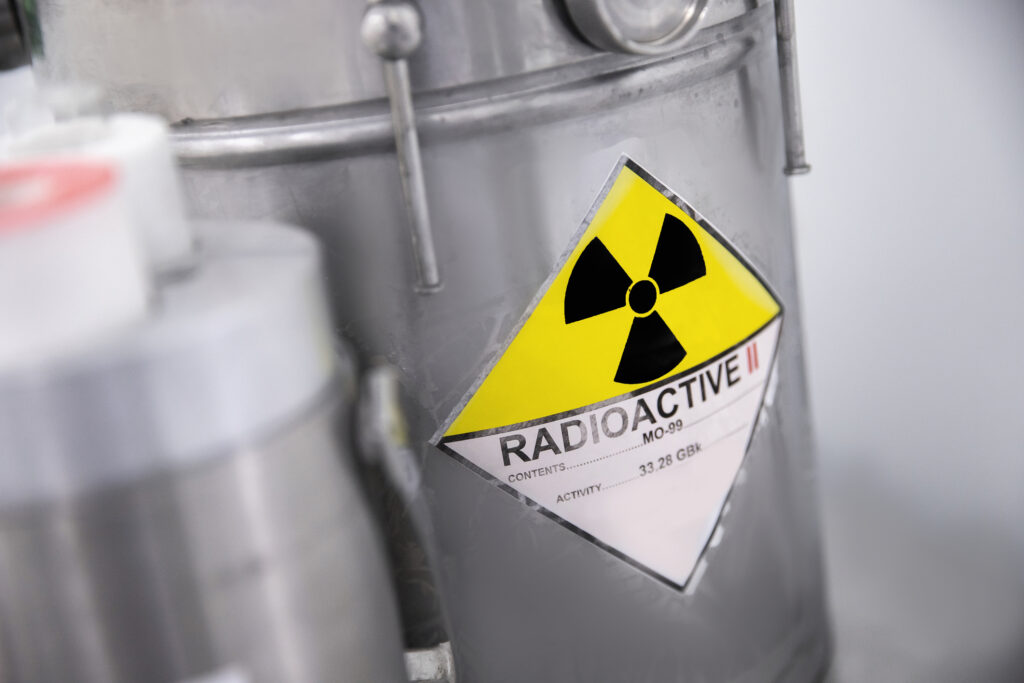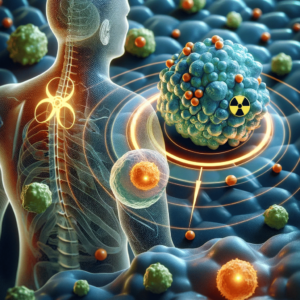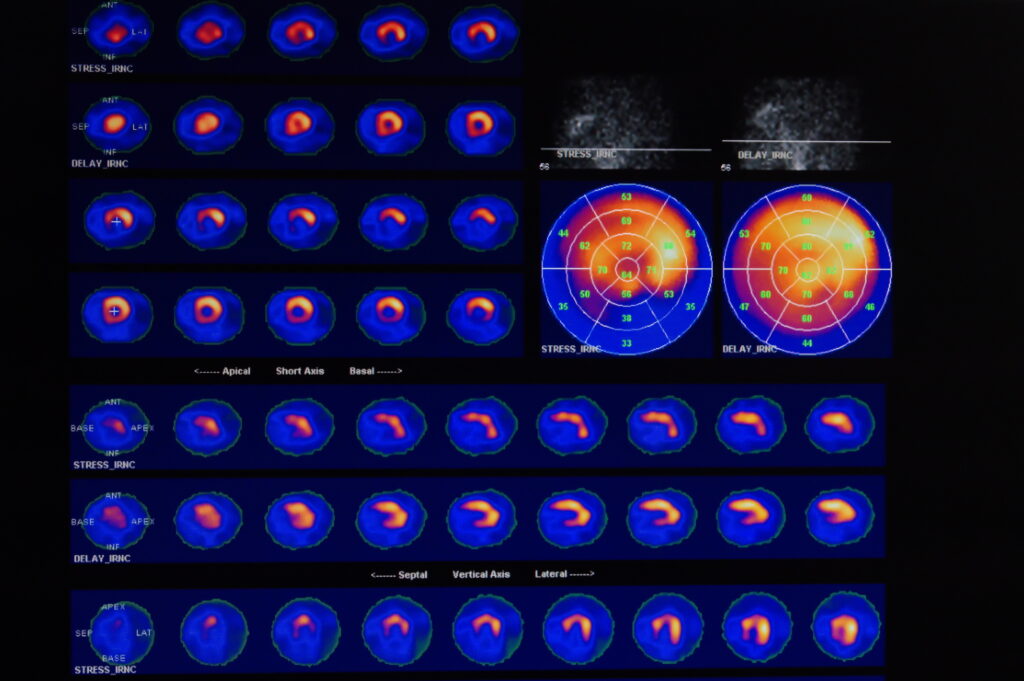Carbon-11 (11C) is a radioactive isotope of carbon that has gained significant attention in the field of nuclear medicine, particularly in positron emission tomography (PET) imaging. This article explores the synthesis of Carbon-11, the methods and techniques employed, its applications in medical and research settings, and the challenges faced in its production and utilisation. The synthesis of Carbon-11 requires advanced technology and meticulous handling due to its short half-life, making it a highly specialised process. Through understanding the synthesis process, this article aims to provide insights into the critical role Carbon-11 plays in modern medical diagnostics and research.
Introduction to Carbon-11
Carbon-11 (11C) is a positron-emitting radionuclide with a half-life of approximately 20.4 minutes. It is primarily used in PET imaging, a technique that allows for the non-invasive study of metabolic processes in the human body. The unique properties of Carbon-11 make it an invaluable tool in medical diagnostics, particularly in the study of brain function, cancer, and cardiovascular diseases.
The short half-life of Carbon-11 necessitates its synthesis close to the point of use, often in facilities equipped with a cyclotron. The rapid decay of 11C also demands swift and efficient synthesis procedures, ensuring that the radiopharmaceuticals are available for immediate application in PET scans.
Production of Carbon-11
The production of Carbon-11 involves a cyclotron, a type of particle accelerator that propels protons or deuterons to high energies. The process typically starts with nitrogen gas enriched with a small amount of oxygen (to produce [11C]CO2) or hydrogen (to produce [11C]CH4). The cyclotron accelerates protons, which are then used to bombard a nitrogen-14 (14N) target, leading to the nuclear reaction 14N(p,α)11C. This reaction results in the production of carbon-11, which is carbon dioxide ([11C]CO2) or methane ([11C]CH4), depending on the target material and conditions.
The operation of the cyclotron requires precise control over the energy of the protons, typically around 11-17 MeV, to ensure the efficient production of Carbon-11. Additionally, handling the irradiated gas and separating Carbon-11 from the target material are critical steps that must be conducted with care to maintain the purity and usability of the isotope.
Target Materials and Gas Handling
The choice of target material and its preparation are crucial in the synthesis of Carbon-11. Nitrogen-14 is the preferred target due to its natural abundance and its reaction pathway with protons to produce Carbon-11.
When aiming to produce [11C]CO2, nitrogen gas is enriched with a small percentage of oxygen. The oxygen serves as a carrier, reacting with the Carbon-11 to form carbon dioxide, which can then be used directly or further processed into other radiopharmaceuticals.
For the production of [11C]CH4, hydrogen is added to the nitrogen gas, which facilitates the formation of methane. Handling these gases requires a system that can withstand the high pressures and temperatures involved in the cyclotron bombardment process. Additionally, the system must efficiently separate the desired 11C-compound from the target material and any by-products.
Synthesis of Carbon-11 Labelled Compounds
The synthesis of 11C-labelled compounds is a race against time due to the short half-life of Carbon-11. Once produced, 11C must be quickly incorporated into a molecular structure suitable for imaging or research purposes. This process involves rapid chemical reactions, often automated and conducted under strict conditions to maximise yield and purity.
Several methods exist for labelling compounds with Carbon-11, depending on the desired end product. These include the use of 11C-methylation, 11C-carboxylation, and 11C-cyanation, among others. Each method requires specific precursors and catalysts to ensure the efficient incorporation of the isotope into the target molecule.
Carbon-11-Methylation
Carbon-11 methylation is one of the most commonly used techniques for labelling molecules with Carbon-11. The process typically involves the reaction of [11C]methyl iodide ([11C]CH3I) or [11C]methyl triflate ([11C]CH3OTf) with a precursor molecule. These methylating agents are prepared from [11C]methane, which is itself produced during the cyclotron bombardment process.
The methylation reaction is usually carried out in an automated synthesiser, which allows for precise control over reaction conditions. This automation is crucial given the rapid decay of 11C, as it minimises the time required to synthesise the radiopharmaceutical and prepare it for use.
Carbon-11 -Carboxylation
Carbon-11 carboxylation involves the incorporation of Carbon-11 into a molecule through a carboxyl group. This method is often used to synthesise 11C-labelled amino acids, fatty acids, and other carboxyl-containing compounds.
The process begins with the production of [11C]CO2, which is then converted into a reactive intermediate, such as [11C]carbonyl chloride or [11C]carboxylic acid derivatives. These intermediates can then react with a precursor molecule to form the desired 11C-labelled compound. As with methylation, the reaction is typically conducted in an automated system to ensure efficiency and reproducibility.
Carbon-11 Cyanation
Carbon-11 cyanation is a method for introducing a cyano group into a molecule using Carbon-11. This technique is useful for synthesising a variety of radiopharmaceuticals, particularly those used in neuroimaging.
The process involves the production of [11C]cyanide, usually from [11C]CO2 or [11C]CH4, which then reacts with a precursor to form the desired 11C-labelled compound. The synthesis must be carefully controlled to avoid the formation of by-products and to maximise the yield of the target molecule.
Applications of Carbon-11 in Medical Imaging
The primary application of Carbon-11 is in PET imaging, where it serves as a tracer for studying various biological processes. PET imaging relies on the detection of gamma rays emitted when the positrons from Carbon-11 decay interact with electrons in the body. This interaction allows for the creation of detailed images of metabolic activity, which are invaluable in diagnosing and monitoring diseases.
Carbon-11-labelled compounds can be used to image different aspects of cellular function, such as glucose metabolism, protein synthesis, and neurotransmitter activity. For example, [11C]flumazenil is used to image benzodiazepine receptors in the brain, providing insights into neurological conditions such as epilepsy and anxiety disorders.
Oncology
In oncology, Carbon-11 is used to image tumours and assess the effectiveness of treatments. 11C-labelled tracers, such as [11C]choline, are utilised to study tumour metabolism and proliferation. This information helps in the detection of cancer, the evaluation of tumour aggressiveness, and the monitoring of response to therapy.
The ability of Carbon-11 PET imaging to detect changes in tumour biology at an early stage makes it a powerful tool in personalised medicine, where treatments can be tailored based on the specific characteristics of an individual’s tumour.
Neurology and Psychiatry
Carbon-11 has significant applications in neurology and psychiatry, particularly in the study of brain function and neurodegenerative diseases. 11C-labelled tracers, such as [11C]PiB (Pittsburgh Compound B), are used to image amyloid plaques in the brain, a hallmark of Alzheimer’s disease. This enables early diagnosis and monitoring of disease progression.
In psychiatry, Carbon-11 tracers help in understanding the underlying mechanisms of mental health disorders by allowing the imaging of neurotransmitter systems, such as dopamine and serotonin. This contributes to the development of new treatments and a better understanding of conditions like depression and schizophrenia.
Challenges in the Synthesis and Application of Carbon-11
The short half-life of Carbon-11, while advantageous for reducing patient radiation exposure, poses significant challenges in its synthesis and application. The isotope must be produced, synthesised into a usable form, and administered to the patient within a very narrow time window. This requires highly coordinated efforts between cyclotron operators, radiochemists, and medical staff.
The need for proximity between the cyclotron facility and the PET scanner further limits the widespread use of Carbon-11, as many hospitals and imaging centres do not have the necessary infrastructure to produce the isotope on-site.
Radiochemical Synthesis
The rapid decay of Carbon-11 places immense pressure on the radiochemical synthesis process. Automated synthesisers are used to ensure the timely production of radiopharmaceuticals, but even with automation, maintaining the efficiency and yield of the synthesis is challenging. The development of new synthesis methods and precursors that are faster and more efficient is an ongoing area of research.
Regulatory and Safety Considerations
Handling radioactive materials involves strict regulatory and safety protocols to protect both the operators and the environment. The production of Carbon-11 and the synthesis of 11C-labelled compounds must comply with these regulations, which include controlling radiation exposure, managing radioactive waste, and ensuring the quality and purity of the radiopharmaceutical product.
Regulatory bodies such as the European Medicines Agency (EMA) and the U.S. Food and Drug Administration (FDA) have established guidelines for the production and use of radiopharmaceuticals, including those labelled with Carbon-11. These guidelines cover various aspects, such as Good Manufacturing Practice (GMP) requirements, labelling, and documentation standards. Compliance with these regulations ensures that radiopharmaceuticals are produced safely and consistently, providing reliable diagnostic information while minimising risks to patients and healthcare workers.
Advances in Carbon-11 Synthesis and Applications
Recent advances in the synthesis of Carbon-11-labelled compounds have focused on improving the efficiency and speed of the synthesis process. One promising area of research is the development of microfluidic devices, which allow for the rapid and efficient synthesis of radiopharmaceuticals in very small volumes. These devices minimise the use of reagents and reduce synthesis times, making them particularly well-suited for handling short-lived isotopes like Carbon-11.
Additionally, new catalyst systems and reaction conditions are being explored to enhance the incorporation of Carbon-11 into complex molecules. These innovations aim to expand the range of 11C-labelled compounds available for PET imaging, thereby broadening the potential applications of this isotope in medical and research settings.
Automation and Robotics
The integration of automation and robotics in the synthesis of Carbon-11-labelled compounds is another significant advancement. Automated synthesisers have long been used in the production of radiopharmaceuticals, but recent developments have focused on increasing their flexibility and reliability. Modern systems can handle a wider range of chemical reactions and can be quickly reprogrammed to produce different 11C-labelled compounds as needed.
Robotic systems are also being developed to automate the entire workflow, from the production of Carbon-11 in the cyclotron to the synthesis and purification of the radiopharmaceutical and even its delivery to the patient. These systems reduce the time required for each step and minimise human error, making the process more efficient and reliable.
Imaging Agents and New Targets
As the synthesis techniques for Carbon-11-labelled compounds improve, so too does the variety of imaging agents available. Researchers are constantly developing new 11C-labelled tracers that target specific biomarkers associated with different diseases. For example, recent studies have focused on developing tracers that target tau protein aggregates in the brain, which are linked to Alzheimer’s disease and other neurodegenerative conditions.
Other novel tracers are being designed to image immune cell activity, allowing for the study of immune responses in various conditions, including cancer and autoimmune diseases. These new imaging agents expand the diagnostic capabilities of PET imaging, enabling more precise and personalised approaches to patient care.
Case Studies and Real-World Applications
One of the most impactful uses of Carbon-11 PET imaging has been in the study of Alzheimer’s disease. The development of 11C-labelled tracers like [11C]PiB has revolutionised the understanding of this disease by allowing researchers to visualise amyloid plaques in the living brain. This capability has led to earlier and more accurate diagnoses, as well as the ability to monitor disease progression and response to new treatments.
Clinical trials of Alzheimer’s disease therapies have also benefitted from Carbon-11 PET imaging, as it provides a non-invasive means to assess the effectiveness of drugs designed to reduce amyloid plaques or other pathological features of the disease. This application highlights the critical role of 11C-labelled compounds in both basic research and clinical practice.
Cancer Diagnosis and Treatment Monitoring
Carbon-11-labelled compounds are widely used in oncology to image tumours and assess the metabolic activity of cancer cells. For instance, [11C]choline PET imaging is used to detect prostate cancer and monitor the effectiveness of treatments. This tracer is particularly useful for identifying recurrent disease and guiding therapeutic decisions.
Another example is the use of 11C-acetate PET imaging in liver and renal cancers, where it helps to differentiate between malignant and benign lesions. The ability of Carbon-11 PET imaging to provide real-time insights into tumour biology makes it an invaluable tool in the management of cancer patients.
Neurotransmitter Systems and Psychiatric Disorders
The study of neurotransmitter systems in the brain has also greatly benefitted from the use of Carbon-11 PET imaging. 11C-labelled tracers that target dopamine, serotonin, and other neurotransmitters are used to investigate the pathophysiology of psychiatric disorders such as depression, schizophrenia, and addiction.
For example, [11C]raclopride is a well-known tracer used to study dopamine receptor availability, providing insights into conditions like Parkinson’s disease and drug addiction. These studies not only advance the understanding of psychiatric and neurological disorders but also aid in the development of new treatments that target specific neurotransmitter systems.
Future Directions and Potential Developments
As synthesis techniques continue to improve and new 11C-labelled compounds are developed, the clinical applications of Carbon-11 PET imaging are expected to expand. One area of potential growth is in the imaging of inflammatory and infectious diseases, where 11C-labelled tracers could be used to detect and monitor the activity of immune cells.
There is also ongoing research into the use of Carbon-11 in combination with other imaging modalities, such as magnetic resonance imaging (MRI), to provide more comprehensive diagnostic information. These multimodal imaging approaches could enhance the accuracy of diagnoses and improve patient outcomes.
Personalised Medicine
The trend towards personalised medicine is likely to drive further advancements in Carbon-11 PET imaging. By tailoring imaging agents to the specific molecular characteristics of a patient’s disease, clinicians can gain more precise information about the condition and its response to treatment. This approach could lead to more effective and targeted therapies, reducing side effects and improving the overall quality of care.
Environmental and Economic Considerations
The production and use of Carbon-11 are resource-intensive processes, and there is increasing awareness of the environmental and economic implications of radiopharmaceutical production. Future developments may focus on making the synthesis of 11C-labelled compounds more sustainable by reducing waste, improving energy efficiency, and minimising the use of hazardous materials.
Economically, advances in automation and synthesis technology could help to lower the costs associated with Carbon-11 PET imaging, making it more accessible to a broader range of healthcare facilities and patients. This could significantly increase the adoption of this powerful diagnostic tool in clinical practice.
Conclusion
The synthesis and application of Carbon-11 represent a fascinating intersection of nuclear physics, chemistry, and medical science. The ability to produce and utilise this short-lived isotope has revolutionised the field of medical imaging, particularly through its role in PET imaging.
Carbon-11’s unique properties, such as its positron emission and short half-life, make it an ideal candidate for studying dynamic biological processes in real-time. However, these same properties also present significant challenges in its production, synthesis, and application. The need for rapid and efficient synthesis methods, coupled with the stringent regulatory requirements and safety considerations, make the handling of Carbon-11 a highly specialised task.
Despite these challenges, the advances in synthesis techniques, automation, and the development of novel imaging agents have continued to push the boundaries of what is possible with Carbon-11 PET imaging. The applications of this technology in oncology, neurology, psychiatry, and other fields demonstrate its immense value in both research and clinical practice.
Looking forward, the continued evolution of Carbon-11 synthesis and its expanding range of applications hold great promise for the future of medical diagnostics and personalised medicine. As new tracers and synthesis methods are developed, the potential for Carbon-11 to provide insights into disease mechanisms and treatment responses will only grow, further cementing its role as a cornerstone of modern nuclear medicine.
The ongoing research and development efforts in this field are likely to yield even more sophisticated and accessible imaging tools, ultimately improving patient outcomes and advancing our understanding of complex biological processes. The synthesis of Carbon-11, therefore, not only exemplifies the cutting-edge of scientific innovation but also represents a critical component in the future of healthcare.
Disclaimer
The content of this article, The Synthesis and Applications of Carbon-11 in Modern Nuclear Medicine, published by Open Medscience on 10 August 2024, is intended for informational and educational purposes only. It is not a substitute for professional medical, scientific, or technical advice, diagnosis, or treatment. While every effort has been made to ensure the accuracy and reliability of the information presented, Open Medscience makes no guarantees regarding its completeness or timeliness.
The article discusses the synthesis and use of radioactive materials, which should only be conducted by trained professionals in facilities that comply with all relevant safety regulations and guidelines. Readers are advised to consult appropriate experts and authorities before applying any information provided herein.
Open Medscience disclaims any liability for any direct, indirect, incidental, or consequential damage arising from the use or misuse of the information in this publication. The views and opinions expressed are those of the authors and do not necessarily reflect those of Open Medscience or its affiliates.
You are here: home » diagnostic medical imaging blog »



